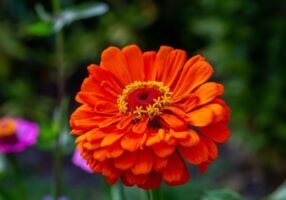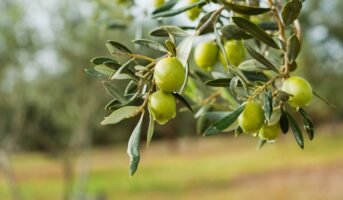Bonsai, with its miniature beauty, transcends mere ornamental value to become a holistic addition to your living space. These tiny yet captivating trees not only contribute to the aesthetics of your home but also offer a myriad of health benefits. In this comprehensive guide, we’ll explore ten remarkable advantages of incorporating Bonsai plants into your home, enhancing both your well-being and the ambience of your living space.
What are the benefits of Bonsai plants?
Stress reduction
Bonsai cultivation, with its meditative and mindful practices, can significantly reduce stress levels. Engaging with these miniature trees promotes relaxation and provides a serene escape from the fast-paced demands of everyday life.
Improved air quality
Bonsai plants act as natural air purifiers, filtering out pollutants and enhancing indoor air quality. This can contribute to respiratory health and create a fresher, more oxygenated environment in your home.
Enhanced focus and creativity
Caring for a Bonsai requires attention to detail and creativity. Engaging in the pruning, wiring, and styling of these miniature trees stimulates cognitive functions, fostering enhanced focus, and encouraging creative thinking.
See also: Bonsai plants: Bring the forest home
Indoor humidity regulation
Bonsai plants contribute to maintaining optimal indoor humidity levels. This is particularly beneficial in dry climates or during the winter months when central heating systems can lead to drier air.
Natural aromatherapy
Some Bonsai varieties, such as the juniper, emanate pleasant fragrances. This natural aromatherapy can have calming effects, promoting relaxation and a positive atmosphere within your home.
Connection with nature
Bringing a piece of nature indoors fosters a sense of connection with the outdoors. Bonsai plants provide an opportunity to experience the beauty and tranquillity of nature within the confines of your home.
Promotion of patience and discipline
Bonsai cultivation demands patience and discipline. The slow, deliberate process of shaping and caring for these miniature trees instils valuable life skills that can positively impact various aspects of your daily routine.
Aesthetically pleasing home decor
Bonsai plants serve as exquisite home decor elements, adding a touch of sophistication and elegance to any space. Their aesthetic appeal enhances the visual appeal of your home, creating a harmonious and serene atmosphere.
Positive Feng Shui influence
In Feng Shui, Bonsai is believed to bring positive energy and harmony to a space. Placing a Bonsai strategically within your home is thought to attract good luck, prosperity, and overall well-being.
Therapeutic benefits
Caring for a Bonsai can be a therapeutic and rewarding experience. The act of nurturing a living being, witnessing its growth, and achieving the desired artistic form can instil a sense of accomplishment and joy.
What are some Bonsai plants ideal for home?
Choosing the right bonsai plant for your home involves considering factors like your level of experience, available space, and the specific care requirements of different species. Here are some popular bonsai plants that you can consider for your home:
Ficus Retusa (Ficus Bonsai)
Ideal for beginners, the Ficus Bonsai is known for its glossy leaves and tolerance to different light conditions. It can be shaped into various styles and is relatively easy to care for.
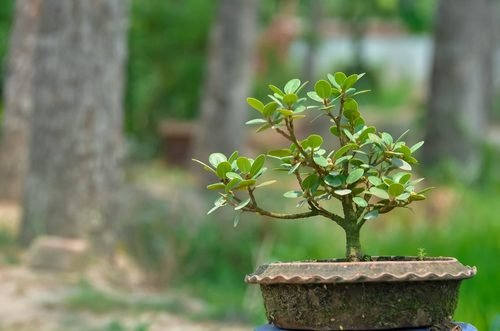
Juniper Bonsai
Juniper bonsai trees are known for their distinctive, needle-like foliage. They are hardy and suitable for both indoor and outdoor cultivation. Junipers are popular for their elegant, windswept styles.
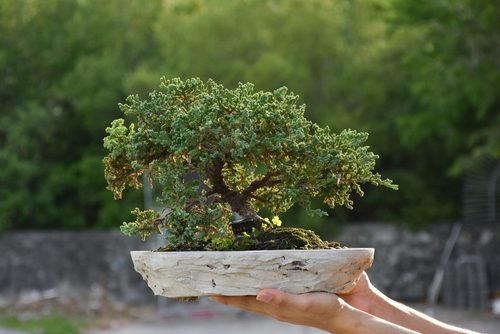
Chinese Elm (Ulmus parvifolia)
Chinese Elm bonsai is a versatile choice, adapting well to different environments. It features small, serrated leaves and responds well to pruning. This species is suitable for both beginners and experienced enthusiasts.

Japanese Maple (Acer palmatum)
Japanese Maple bonsai is prized for its vibrant, palm-shaped leaves that change colour with the seasons. It requires a bit more attention and is recommended for growers with some bonsai experience.
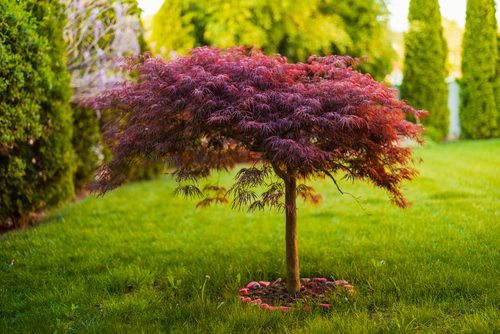
Jade Bonsai (Crassula ovata)
The Jade Plant is a popular choice for indoor bonsai. It has thick, succulent leaves and is relatively easy to care for. It symbolises good luck and prosperity in many cultures.
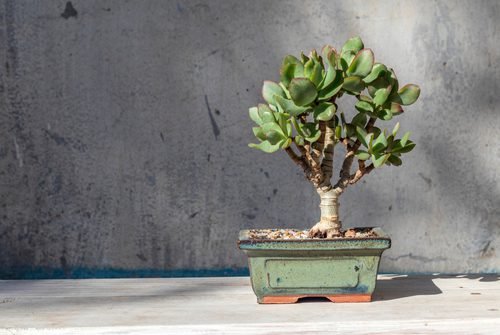
Trident Maple (Acer buergerianum)
Trident Maple bonsai features three-lobed leaves and striking autumn colours. It is suitable for outdoor cultivation and is appreciated for its adaptability to various bonsai styles.
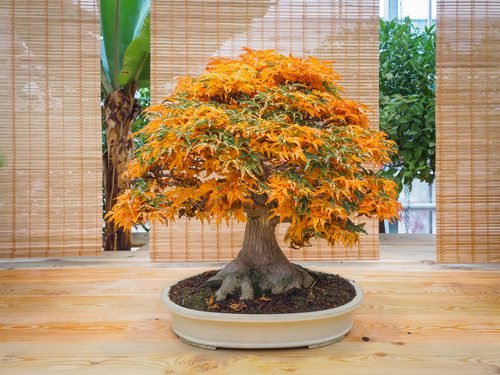
Pine Bonsai (Pinus spp.)
Pine bonsai trees, like Japanese Black Pine or Scots Pine, are known for their distinctive needles and rugged appearance. They require more sunlight and are recommended for experienced bonsai enthusiasts.
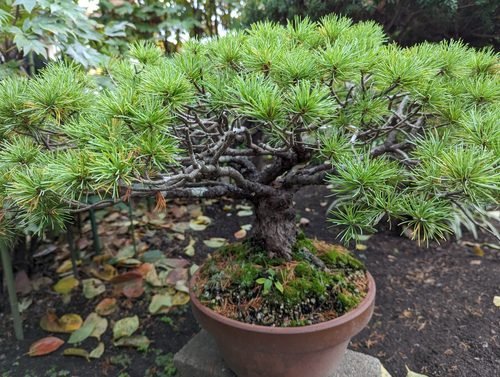
Serissa (Serissa foetida)
Serissa, also known as the “Tree of a Thousand Stars,” is admired for its tiny white flowers and fine foliage. It’s suitable for indoor cultivation and is appreciated for its delicate appearance.
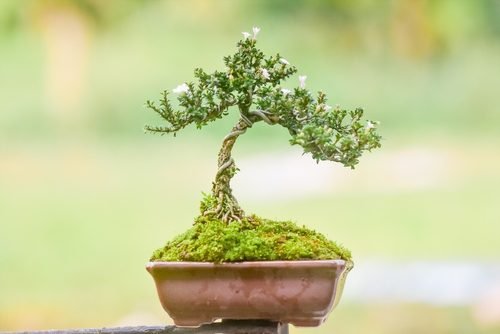
Azalea Bonsai (Rhododendron spp.)
Azalea bonsai trees produce vibrant flowers and are favoured for their captivating blooms. They require a bit more care, especially regarding watering and humidity levels.

Dwarf Jade (Portulacaria afra)
It is also known as Elephant Bush, Dwarf Jade is a succulent bonsai with small, glossy leaves. It is easy to care for and is suitable for both beginners and experienced bonsai growers.
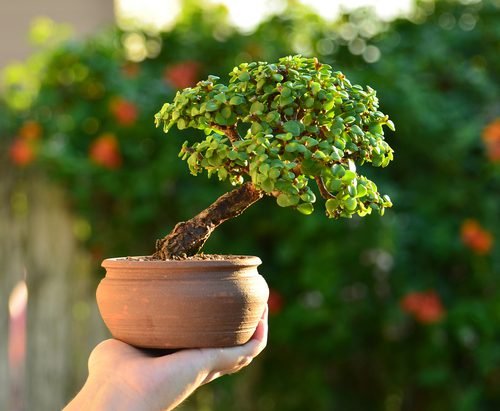
FAQs
What are the basic care requirements for a Bonsai plant at home?
Basic care includes proper sunlight exposure, watering when the soil feels slightly dry, using well-draining soil, and regular pruning to maintain the desired shape.
Can I keep my Bonsai indoors, or does it need to be placed outdoors?
It depends on the bonsai species. Some can thrive indoors, but many benefit from outdoor conditions. Research the specific requirements of your Bonsai species for the best placement.
How often should I water my Bonsai, and what is the best watering technique?
Water when the soil surface feels slightly dry. The frequency depends on factors like species, climate, and season. Use the immersion or watering from the above technique, ensuring water reaches the entire root system.
What are the common pests and diseases that affect bonsai, and how can I prevent or treat them?
Common issues include aphids, spider mites, and fungal diseases. Regularly inspect your bonsai, maintain good hygiene, and treat promptly with appropriate insecticides or fungicides if needed.
How do I prune and shape my bonsai to maintain its desired form?
Prune regularly to maintain shape and remove unwanted growth. Use sharp, clean tools, and follow the natural growth pattern. Consider wiring for shaping, ensuring not to stress the plant excessively.
What type of soil is best for bonsai, and how often should I repot my plant?
Well-draining bonsai soil is crucial. Re-pot every 1-3 years during the growing season, refreshing the soil and trimming roots to maintain a healthy root system.
Are there specific fertilisation requirements for bonsai plants?
Use a balanced, water-soluble fertiliser during the growing season. Adjust the frequency based on the species and growing conditions. Reduce or stop fertilising during dormancy.
| Got any questions or point of view on our article? We would love to hear from you. Write to our Editor-in-Chief Jhumur Ghosh at [email protected] |

Shimon Oberoi, an economics graduate from Rajdhani College, University of Delhi, strives to simplify the real estate world through her compelling and well-researched content. She has experience in domains like entertainment and economic concepts, among others. When not creating content, she enjoys watching movies, listening to music, and reading fictional books.


